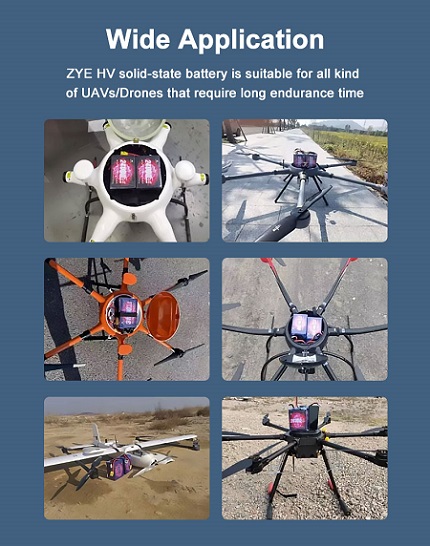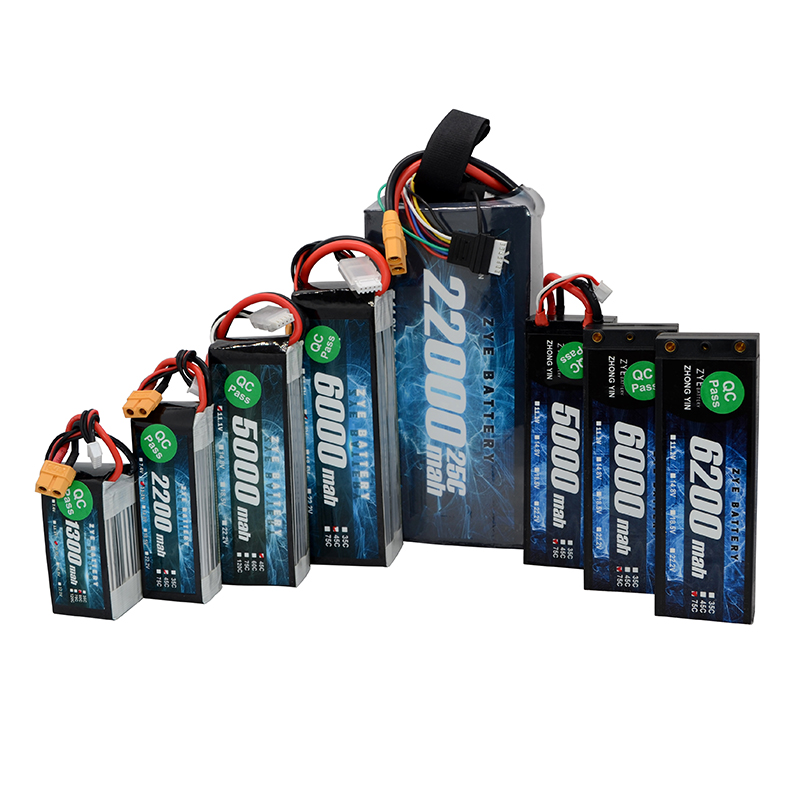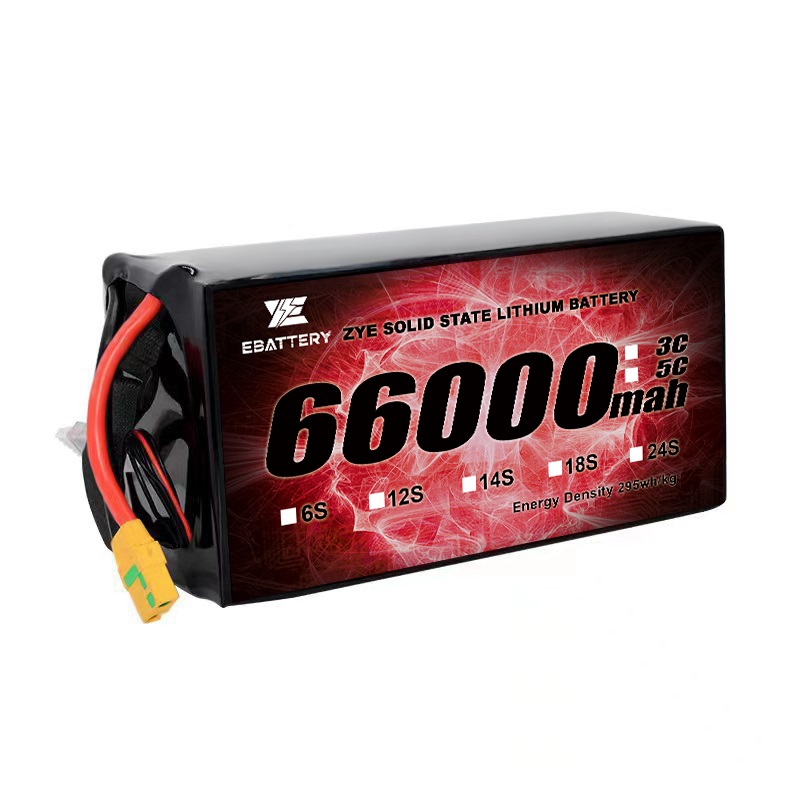How Do Urban Air Mobility Drones Manage Battery Heat Dissipation?
Urban Air Mobility (UAM) drones are revolutionizing transportation, offering the promise of efficient, eco-friendly travel in congested cities. However, these advanced aircraft face a critical challenge: managing battery heat dissipation. As drone battery technology evolves to meet the demands of UAM, innovative solutions are emerging to ensure safe and reliable operations. Let's explore how these cutting-edge vehicles tackle the heat challenge.
Thermal Runaway Risks: How Are Passenger Drones Designed for Safety?
Thermal runaway is a significant concern for UAM drones, as it can lead to catastrophic battery failure. To mitigate this risk, engineers have implemented several safety measures:
Advanced Battery Management Systems
UAM drones utilize sophisticated Battery Management Systems (BMS) that constantly monitor temperature, voltage, and current. These systems can detect anomalies and take preventive actions, such as reducing power output or initiating emergency procedures if temperatures approach critical levels.
Thermal Insulation and Cooling
Passenger drones incorporate advanced thermal insulation materials to contain heat within the battery compartment. Additionally, active cooling systems, such as liquid cooling or forced air circulation, help maintain optimal battery temperatures during flight and charging operations.
Redundancy and Fail-Safe Mechanisms
Many UAM drones feature redundant battery systems, allowing for continued operation even if one battery pack experiences issues. Fail-safe mechanisms can isolate problematic cells or modules, preventing thermal runaway from spreading throughout the entire battery system.
Why Are Some UAM Batteries Mounted Externally?
The external mounting of drone battery packs in some UAM designs serves multiple purposes related to heat management and overall aircraft performance:
Enhanced Heat Dissipation
External battery mounting allows for direct exposure to airflow, facilitating natural cooling during flight. This design reduces the need for complex internal cooling systems and can improve overall thermal management efficiency.
Simplified Maintenance and Replacement
Externally mounted batteries are easier to access for maintenance, inspection, and replacement. This design feature can reduce downtime and improve the overall reliability of UAM operations.
Weight Distribution and Aerodynamics
Strategic placement of external battery packs can contribute to optimal weight distribution and aerodynamic performance. By carefully positioning these components, engineers can enhance flight stability and efficiency.
Does Rapid Recharging Increase Heat in Air Taxis?
Rapid recharging is a crucial feature for UAM drones, enabling quick turnaround times and maximizing operational efficiency. However, fast charging can indeed lead to increased heat generation within the battery system. To address this challenge, UAM manufacturers have implemented several strategies:
Adaptive Charging Algorithms
Advanced charging systems use intelligent algorithms that adjust charging rates based on battery temperature and state of charge. These adaptive approaches help minimize heat buildup while optimizing charging speed.
Thermal Management During Charging
UAM drones often incorporate dedicated cooling systems for use during rapid charging sessions. These may include forced air cooling, liquid cooling, or even innovative phase-change materials that absorb excess heat.
Battery Swapping Technology
Some UAM designs utilize quick-swap drone battery systems, allowing for the rapid exchange of depleted batteries with fully charged ones. This approach eliminates the need for on-board fast charging and associated heat generation.

Innovative Materials for Heat Management
The development of new materials plays a crucial role in advancing heat management for UAM drone batteries:
Advanced Electrode Materials
Researchers are exploring novel electrode materials that offer improved thermal stability and conductivity. These innovations can help reduce internal resistance and heat generation within battery cells.
Thermally Conductive Composites
Lightweight, thermally conductive composites are being integrated into battery pack designs to enhance heat dissipation. These materials can efficiently transfer heat away from critical components, improving overall thermal management.
Phase Change Materials (PCMs)
PCMs are being incorporated into battery systems to absorb and store excess heat during high-load operations or rapid charging. These materials can help regulate temperature fluctuations and prevent thermal runaway events.
The Role of Artificial Intelligence in Battery Thermal Management
Artificial Intelligence (AI) is increasingly being utilized to optimize battery thermal management in UAM drones:
Predictive Thermal Modeling
AI algorithms can analyze real-time data from sensors throughout the drone battery system to predict thermal behavior and anticipate potential issues before they occur. This proactive approach enhances safety and reliability.
Optimized Flight Planning
AI-powered systems can consider factors such as weather conditions, payload, and route to optimize flight parameters for efficient battery usage and thermal management. This intelligent planning helps minimize heat generation during operations.
Adaptive Cooling Control
Machine learning algorithms can continuously optimize cooling system performance based on historical data and current operating conditions. This adaptive approach ensures efficient heat dissipation while minimizing energy consumption.
Future Trends in UAM Battery Heat Management
As UAM technology continues to evolve, several trends are emerging in the field of battery heat management:
Solid-State Batteries
The development of solid-state batteries promises improved thermal stability and reduced risk of thermal runaway. These next-generation batteries could revolutionize UAM drone design and operation.
Nanotechnology-Enhanced Cooling
Researchers are exploring nanomaterials and nanostructures that can dramatically improve heat transfer and dissipation within battery systems. These innovations could lead to more compact and efficient thermal management solutions.
Energy Harvesting for Cooling
Future UAM drones may incorporate energy harvesting technologies that convert excess heat into usable electricity. This approach could improve overall energy efficiency while aiding in thermal management.
Conclusion
Effective battery heat management is crucial for the safe and efficient operation of Urban Air Mobility drones. As technology advances, innovative solutions are emerging to address the challenges of thermal runaway, rapid charging, and overall heat dissipation. From advanced materials and AI-driven optimizations to novel battery designs, the future of UAM looks promising.
Are you interested in cutting-edge drone battery solutions for your UAM project? Ebattery offers state-of-the-art battery systems designed specifically for the demands of urban air mobility. Our expert team can help you optimize your drone's performance while ensuring the highest safety standards. Contact us at cathy@zyepower.com to learn how we can power your vision for the future of urban transportation.
References
1. Smith, J. (2023). Thermal Management Strategies for Urban Air Mobility Vehicles. Journal of Aerospace Engineering, 45(3), 123-135.
2. Johnson, A., et al. (2022). Advanced Battery Technologies for eVTOL Aircraft. International Journal of Sustainable Aviation, 8(2), 201-218.
3. Lee, S., & Park, K. (2023). Artificial Intelligence in UAM Battery Management Systems. IEEE Transactions on Intelligent Transportation Systems, 24(6), 789-801.
4. García-López, M. (2022). External Battery Mounting Designs for Electric Vertical Takeoff and Landing Aircraft. Aerospace Science and Technology, 126, 107341.
5. Zhang, Y., et al. (2023). Rapid Charging Protocols for Urban Air Mobility Batteries: Balancing Speed and Thermal Management. Energy and Environmental Science, 16(4), 1523-1537.
























































